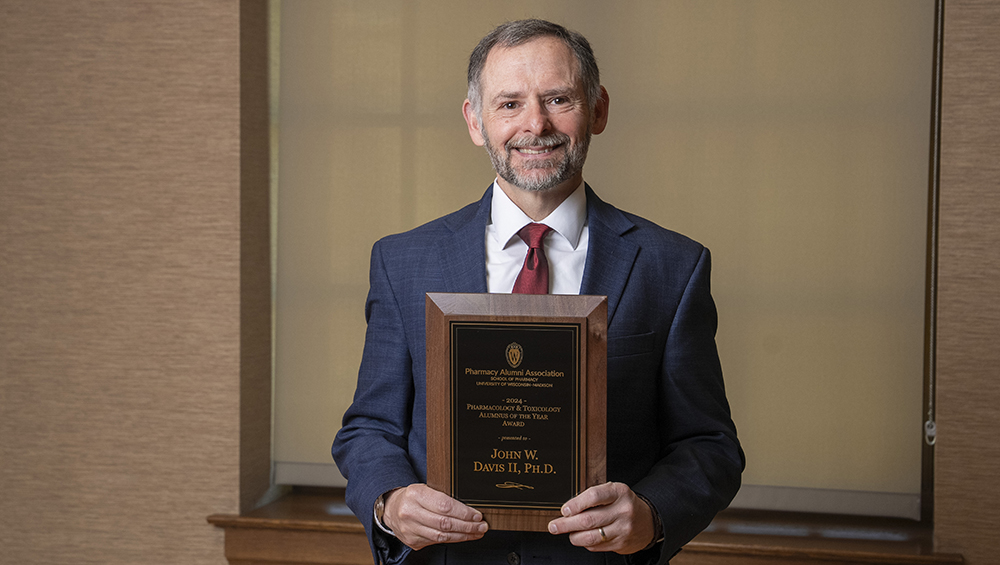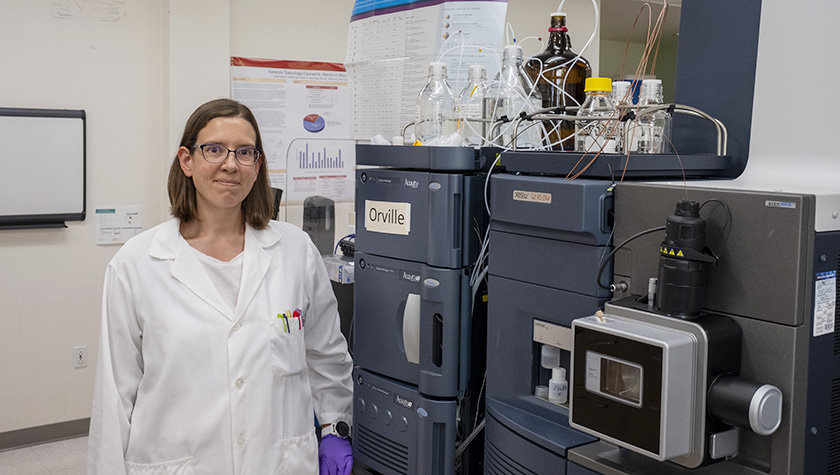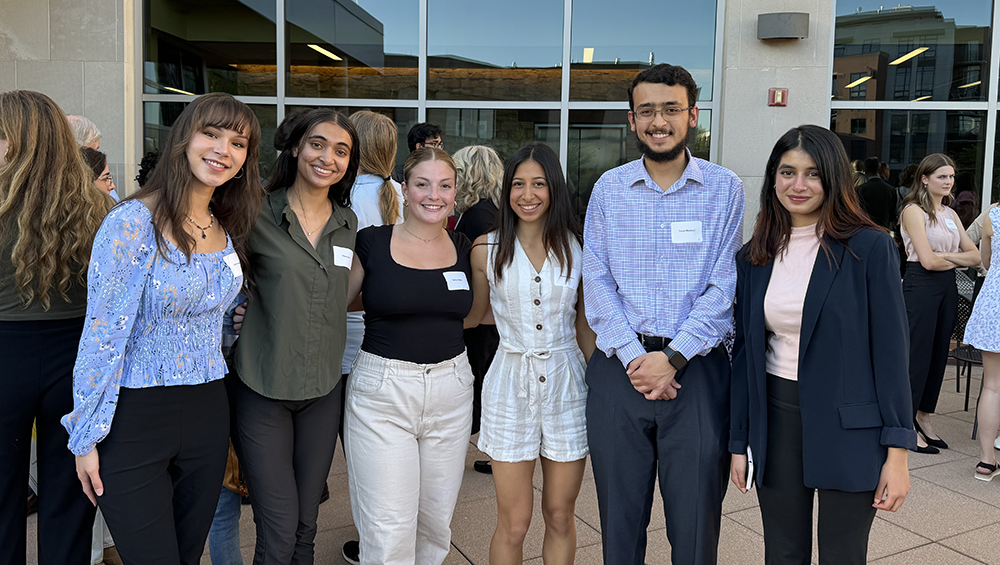
PharmTox students pursue original, impactful research with Hilldale, Sophomore Research Fellowships
By Katie Ginder-Vogel
From cows to cancer, the students in the University of Wisconsin–Madison’s Pharmacology and Toxicology bachelor’s degree program have the flexibility to follow their passions in the labs of research faculty across campus. The unique program’s individualized approach to research pays off, with students each year earning the most prestigious undergraduate research awards on campus: the Hilldale Undergraduate/Faculty Research Fellowships.
On a campus with nearly 40,000 undergraduates, just 100 receive Hilldale Fellowships each year, and in 2024, an impressive five of the School’s PharmTox students earned the honor: Yazan Hammad, Paulina Esguerra, Jacqueline Wallin, Samira Pal, and Lauren Krueger. Another PharmTox student, Nandini Saluja, also earned an esteemed UW–Madison Sophomore Research Fellowship.
“For a program with only about 50 students at any given time, the Pharmacology and Toxicology major has an impressive record of Hilldale and campus-wide award recipients — this year especially,” says Kendra Gurnee, PharmTox academic program manager.
“This really demonstrates our students’ commitment to research and collaboration with faculty, and how they exemplify the Wisconsin Idea through intellectual confidence and relentless curiosity.”
—Kendra Gurnee
The Hilldale Fellowships celebrate undergraduates’ impactful original research and provides them with training and support, including a $3,000 stipend to further their research alongside their mentor. The Sophomore Research Fellowship provides students with training and support in the form of a $2,500 stipend.
In the past six years, PharmTox have now earned nearly 30 Hilldale Fellowships. That strong track record of success is a result of the rigorous interdisciplinary curriculum that requires independent research.
“This really demonstrates our students’ commitment to research and collaboration with faculty, and how they exemplify the Wisconsin Idea through intellectual confidence and relentless curiosity,” says Gurnee.
That curiosity has drawn this year’s PharmTox Hilldale and Sophomore Research honorees to explore territory targeting cancer, finding Alzheimer’s biomarkers, exploring genotoxicity, and reducing dairy emissions.
Examining Alzheimer’s biomarkers
Hammad was inspired to pursue Alzheimer’s research through a personal connection: his grandfather developed the disease and passed away.
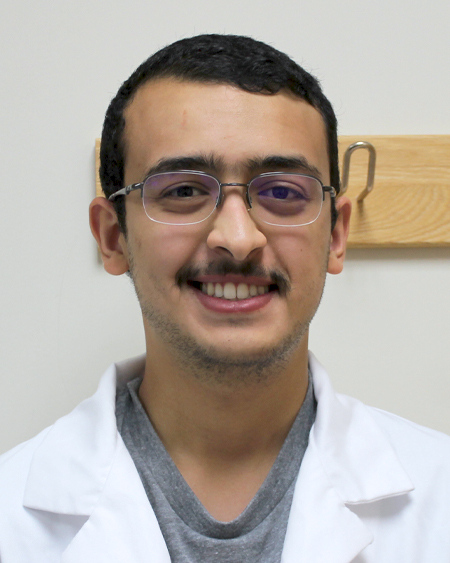
Now, with scientist Yuetiva Robles in the Wisconsin Alzheimer’s Disease Research Center, he’s looking broadly at genetic scores and their correlation with accumulation of amyloid — the protein that builds up into the plaques in the brain, as seen in Alzheimer’s disease.
“The unique aspect of my research is looking at polygenics scores, in which we take smaller genetic variables and combine them into a larger score to see if it’s correlated with developing Alzheimer’s disease,” Hammad says.
One benefit of Hammad’s research could be expanding clinical trial cohorts.
“Being able to identify people who are at higher risk of developing amyloid positivity, meaning the presence of β-amyloid plaques in the brain, with other genetic risk factors could expand the pool of eligible clinical trial participants,” Hammad says.
Hammad, who is applying to medical school this fall with hopes of becoming a geriatrician, says the greatest hope for his project would be to improve predictions about which people are at risk for developing Alzheimer’s disease.
“We know the biggest genetic risk factor is a variation of APOE, which is a gene that helps our body process fats, but including multiple smaller genetic factors in our models alongside APOE can better predict who’s at higher risk,” he says. “By knowing better which genetic factors influence the development of Alzheimer’s disease, we can screen more people for testing, see who’s at risk, and provide earlier treatment.”
Exploring tumor suppression
With Professor Weiping Tang, in the School of Pharmacy’s Pharmaceutical Sciences Division, Esguerra is probing p53, a protein critical to suppressing tumors. But a common mutation in the protein can prevent it from inhibiting tumors.
“p53 often works improperly in cancer lines, due to an accumulation of the oncoprotein MDM2,” says Esguerra. “Our goal is to reduce MDM2 so p53 can function properly.”

With the Tang Research Group, which has a biology and a chemistry section, Esguerra hopes to begin her investigation using leukemia cell lines, and if the work looks promising, she may move on to other cell lines.
“I work on the biology side of the lab, and the chemistry side makes compounds, so we do everything in-house and get to collaborate,” says Esguerra. “I work on testing compounds in cell lines, go back and tell the chemists what’s happening, and they go back and change the compounds.”
Esguerra has worked in the Tang lab since her freshman year, and Ira Tandon, a Tang Lab graduate student in the UW Molecular and Cellular Pharmacology Program, is her mentor.
Esguerra plans to earn her PhD in pharmacology, with a continued focus on precision medicine.
“Targeted therapies are important because they give patients treatment opportunities beyond chemotherapy,” says Esguerra. “I would love to see my work move forward to clinical trials, to reach patients and give them more treatment options.”
Improving precision medicine for prostate cancer
Wallin is working on a different aspect of precision medicine: a novel treatment for prostate cancer.
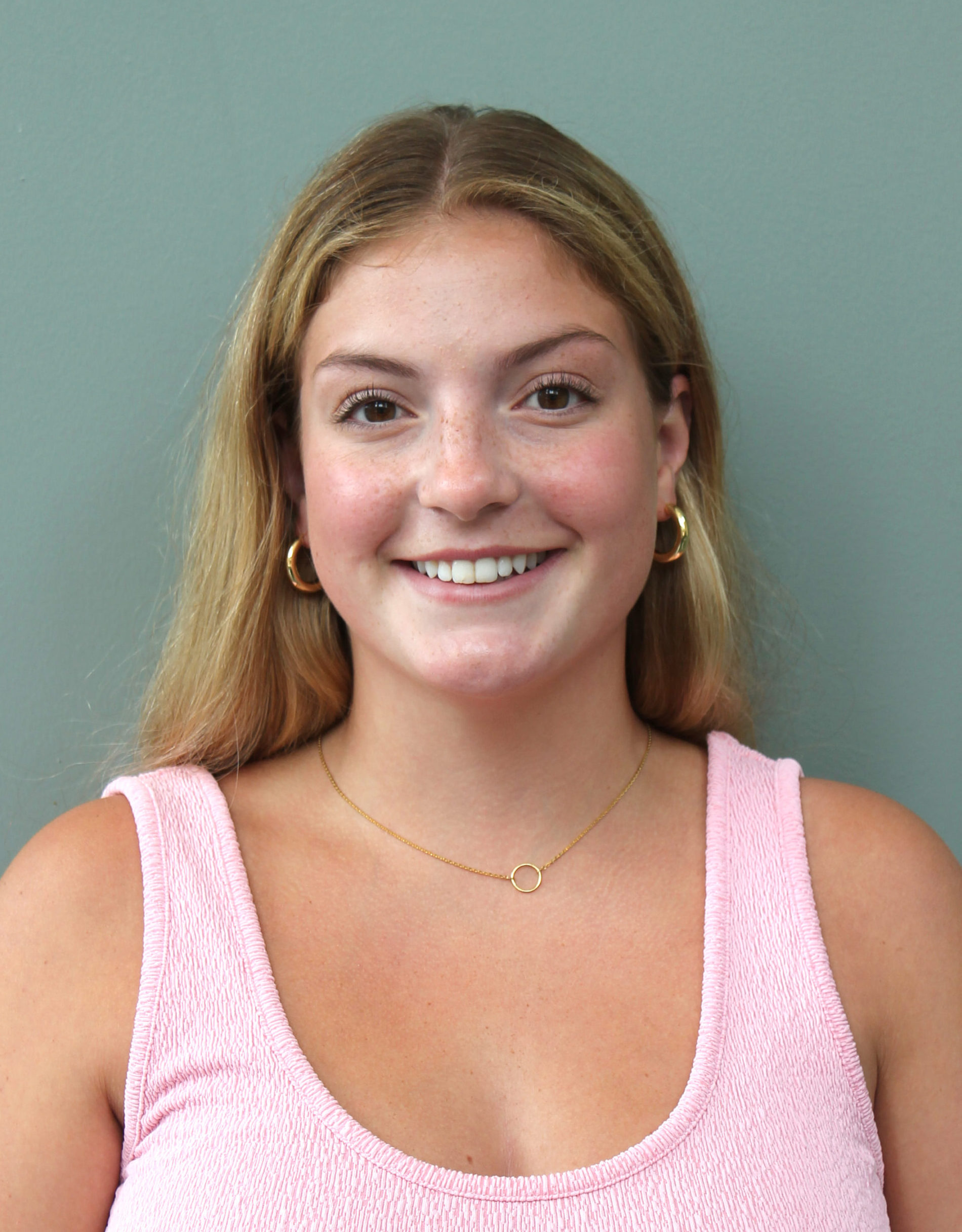
“I’m working with antibody-drug conjugates (ADC) to target specific antigens in prostate cancer tumors and deliver drugs through ADC,” says Wallin, who is working in the lab of Joshua Lang, a professor in the UW Department of Medicine. “We are studying it in the lab right now, but the hope would be to eventually study it as a patient treatment.”
Like Hammad, Wallin is applying to medical school this fall.
“I would love to continue my research in oncology,” she says. “It’s an important field, and this is an exciting area of study.”
As an aspiring healthcare worker, Wallin sees the need for more targeted cancer treatments, and Lang’s research inspired her.
“It’s a cool area to work in because it’s basic research with the potential to be translated to patient care,” she says.
Personalizing cancer immunotherapies
Pal is working in the lab of Quanyin Hu, assistant professor in the School of Pharmacy’s Pharmaceutical Sciences Division, on research that targets a breadth of cancer types through the development of personalized immunotherapy.

“I’ve been working in the lab trying to figure out how we can best create more personalized, targeted approaches to types of cancers,” Pal says. “My research targets the protein ferritin, which stores iron ions in cells. All your cells have this protein, and we’re trying to target it and cause a high release of iron ions into the cancer cells, to kill them from the inside.”
Postdoc Yu Chen supervises Pal’s work.
“He’s taught me so much,” says Pal, who plans to apply to pharmacy school this summer. “I’ve picked up my research skills and passion for research from him. He’s an amazing mentor.”
When Pal started working in Hu’s Cell-Inspired Personalized Therapeutic (CIPT) Lab, she was looking at ferritin in melanoma, which is not a solid tumor cancer, and found herself wondering how the lab’s approach to melanoma would work in a different tumor environment, like breast cancer cells. Her Hilldale Fellowship will allow her to begin research that targets triple-negative breast cancer.
“Triple-negative means patients don’t have estrogen or progesterone receptors, so the cancer is hard to target and treat,” she explains. “The complexity and unique nature of triple-negative breast cancer could allow us to refine our chemical strategy and how we want to approach trying to treat and target cancer.”
Understanding the benzene’s cancer risk
Benzene is a common but volatile compound found in our own homes, through exposure to cigarette smoke, adhesives, solvents, pesticides — even plywood, particleboard, and synthetic finishes can release benzene into the air.

Krueger is using her Hilldale Fellowship to research the genotoxicity of benzene in the lab of Professor Lauren Trepanier in the Department of Medical Sciences to learn how much benzene is too much. With research mentor Ashleigh Tindle, a PhD student in the UW’s Molecular and Environmental Toxicology program, she plans to measure the amounts of benzene metabolites in the urine samples of healthy dogs and dogs diagnosed with lymphoma to estimate how much benzene was in their blood.
“From there, I will conduct experiments in vitro to assess whether these estimated blood benzene concentrations cause significant levels of DNA damage,” says Krueger. “I will also be including experiments with bioactivation to assess how that impacts DNA damage.”
After she establishes the minimum level of benzene in the blood that causes significant DNA damage in lymphocyte cells, also known as the genotoxic threshold, she will see if any of the study’s dogs meet or exceed that threshold.
The study uses dogs as an analog to better understand humans’ non-occupational risk of lymphoma, as dogs are exposed to the same household environment and spontaneously develop canine multicentric lymphoma, which closely resembles human non-Hodgkin lymphoma (NHL), but with a higher incidence and accelerated timeline.
“I am particularly interested in exploring the risk of NHL due to benzene, as it is a known indoor air pollutant, carcinogen, and genotoxin, but it’s still unclear whether non-occupational exposures are genotoxic,” says Krueger. “The results of this project will not only support benzene exposure at home as a possible risk of lymphoma in dogs but also contribute to a better understanding of humans’ risk of lymphoma.”
Reducing emissions from dairy livestock
In the U.S., dairy and beef cattle are responsible for about 30 percent of methane emissions — a greenhouse gas 28 times more potent than carbon dioxide in warming the atmosphere, though shorter lived. In the lab of Animal and Dairy Sciences Professor Hilario Mantovani, Saluja will use her Sophomore Research Fellowship to try to bring down that percentage.

“I’m going to look at different additives you can put in fecal matter to reduce methane emissions,” Saluja explains. “I’m very passionate about environmental justice and finding ways to solve issues without impacting the output of the agricultural industry. I thought this would be an excellent way to achieve that.”
Saluja appreciates the mentorship and skills she’s learning in Mantovani’s lab.
“I’m getting great mentorship — the grad students are some of the best people that I’ve met,” she says. “I’m learning microbiology, and the skills I’m learning from this project can apply to new projects.”
Working in Mantovani’s research group has solidified Saluja’s love of research.
“I’ve loved doing research with my lab and want to pursue it further,” she says. “I want to explore the human gut microbiome and understand how it impacts human health and how it can be leveraged to create treatments for people.”
